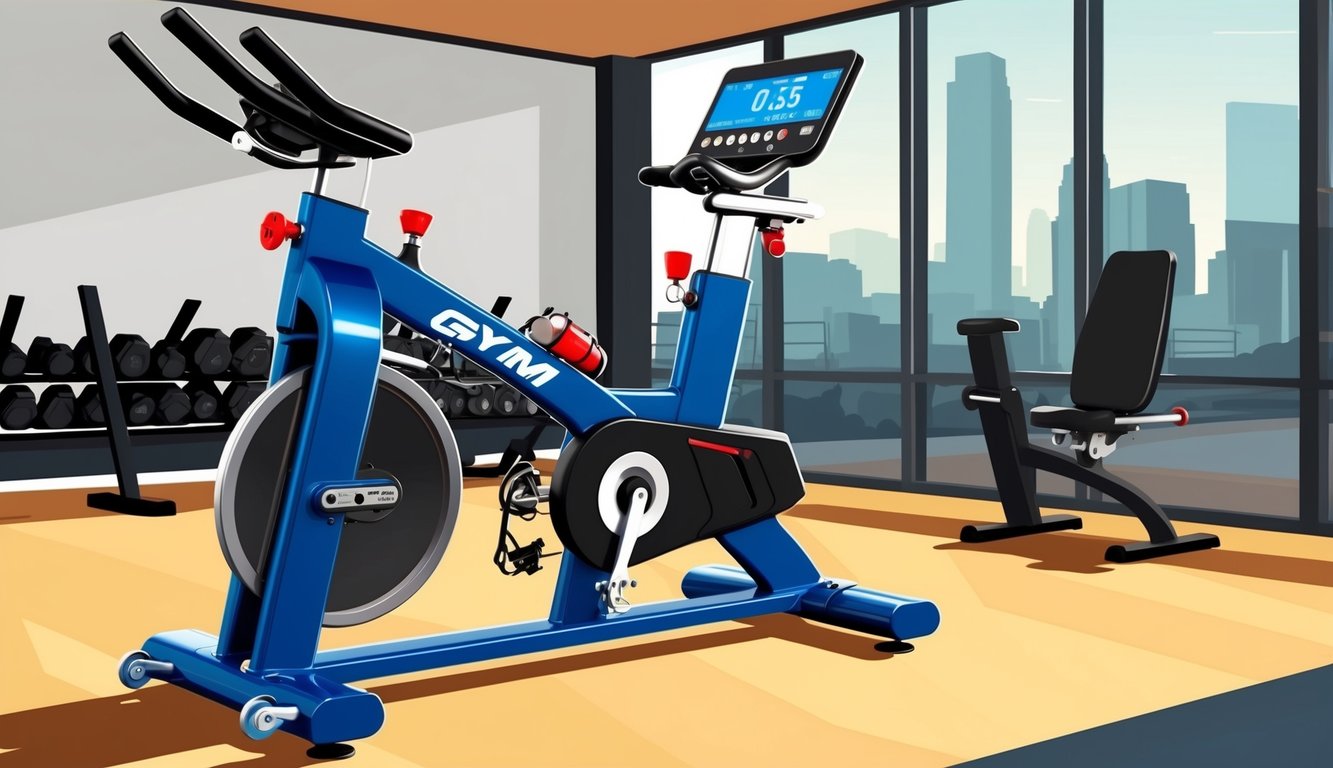The Army Physical Fitness Test (APFT) has been a vital component in ensuring that soldiers remain in optimal physical shape.
Traditionally, the test includes a 2-mile run as the primary aerobic component, but an alternative bike test is available for those with specific medical conditions.
Soldiers taking the APFT bike test are required to complete 6.2 miles (10 kilometers) within a timeframe determined by their age and gender.
You may be curious about how the bike test stacks up against the run in terms of difficulty and scoring.
Fortunately, both tests are crafted to present a similar level of challenge, enabling you to showcase your cardiovascular fitness even if running is not feasible.
This alternative is particularly beneficial for those recovering from injuries or those with permanent profiles, allowing continued participation in this essential evaluation of fitness.
To prepare effectively for the APFT bike test, it’s important to familiarize yourself with the specific time goals tailored to your age group and gender.
Regular training on either a stationary or a road bike will significantly help in developing the necessary endurance and leg strength to meet or exceed these standards.
Remember, maintaining physical fitness is crucial for overall readiness as a soldier.
### Key Takeaways
– The APFT bike test serves as an alternative to the 2-mile run for soldiers with specific medical conditions.
– Time requirements for the 6.2-mile bike test are dependent on age and gender.
– Consistent cycling training is essential for success in the APFT bike event.
## Understanding the APFT

The Army Physical Fitness Test (APFT) plays a critical role in military life by assessing physical readiness.
It evaluates cardiorespiratory fitness and muscular endurance through a series of established exercises.
### Origin and Significance
Since its inception in the 1980s, the APFT has been integral in ensuring that soldiers maintain a high level of physical readiness for combat situations.
Over the decades, the test has adapted to better reflect the current needs of modern warfare.
Its importance lies in its ability to serve as a key indicator of an soldier’s overall health and fitness to perform military tasks effectively.
Scoring on the APFT can influence career advancement and deployability, where top performers receive recognition while those who struggle may face the need for additional training or administrative measures.
### Components and Purpose
The traditional APFT consists of three components: push-ups, sit-ups, and a two-mile run.
Each of these events serves a unique role in assessing your fitness:
1. **Push-ups**: Gauge upper body muscular endurance.
2. **Sit-ups**: Measure core strength and endurance.
3. **Two-mile run**: Assesses cardiorespiratory fitness.
You are allotted two minutes to perform as many push-ups and sit-ups as you can, with the run needing to be completed in the shortest time possible.
Scoring is determined based on your age and gender.
Beyond simple evaluation, the APFT encourages a consistent fitness regimen, fostering a culture of health throughout the Army.
Regular training for the APFT builds the strength and endurance necessary for military operations.
## APFT Physical Fitness Components

The Army Physical Fitness Test (APFT) scrutinizes four fundamental elements of a soldier’s physical condition, collectively ensuring operational effectiveness and combat readiness.
### Cardiorespiratory Fitness
Integral for soldiers to sustain energy during prolonged missions, cardiorespiratory fitness is tested via a 2-mile run, which must be completed swiftly to achieve a good score.
Training for this segment can include running, swimming, or cycling, with a goal of 3-5 cardio sessions weekly, each lasting 20-30 minutes.
Gradually enhancing your workout’s duration and intensity will contribute to performance improvements.
Interval training can be notably beneficial; for instance, mixing high-intensity running for 1 minute with 2 minutes of jogging helps enhance both speed and endurance.
### Muscular Endurance and Strength
Crucial for managing heavy equipment and performing repetitive tasks, muscular endurance and strength are evaluated through push-ups and sit-ups.
Key aspects of your push-up routine should focus on maintaining proper form—keeping the body straight and lowering towards the ground without losing alignment.
Start with three sets daily, focusing on repetition volume.
To achieve strong core muscles necessary for effective sit-ups, incorporate exercises like crunches, planks, and leg raises, aiming for 3-4 core workouts each week.
Including strength training like squats, lunges, and pull-ups will boost overall muscle strength, benefitting your APFT results.
### Flexibility
Although not directly tested during the APFT, flexibility remains vital for injury prevention and fitness maintenance.
It promotes proper form during exercises and minimizes muscle strain risks.
Integrate stretching routines into your daily schedule, focusing on major muscle groups such as hamstrings, quadriceps, and shoulders.
Each stretch should be held for 15-30 seconds without bouncing.
Practicing yoga can also greatly improve flexibility.
Consider beginner classes or online tutorials, with even short daily sessions providing substantial benefits.
### Body Composition
Body composition refers to the balance of body fat relative to lean mass.
While it isn’t measured in the APFT, maintaining a healthy body composition is essential for overall fitness and military appearance standards.
To enhance your body composition, merge regular exercise with a balanced diet rich in whole foods, lean proteins, and abundant fruits and vegetables.
Staying hydrated by drinking water throughout the day is essential.
Avoid processed foods and sugary beverages, which can lead to unwanted weight gain and decreased performance.
Instead, opt for nutrient-dense snacks like nuts or fruits to sustain your workouts.
## APFT Age and Gender Standards

The Army Physical Fitness Test (APFT) establishes different standards for the bike test based on age and gender, crucial for setting performance expectations and scoring.
### Age Categories
To ensure fairness during assessments, the APFT divides soldiers into age groups typically ranging in 5-year intervals:
– 17-21 years
– 22-26 years
– 27-31 years
– 32-36 years
– 37-41 years
– 42-46 years
– 47-51 years
– 52 years and above
As one ages, the standards modify to acknowledge natural shifts in physical ability.
For instance, a soldier aged 25 may need to complete the bike test quicker than a soldier aged 45 to achieve the same score.
### Gender-Specific Requirements
Recognizing physiological differences between males and females, the APFT sets distinct standards for each gender, reflecting average differences in muscle mass, body composition, and cardiovascular capabilities.
Generally, female soldiers receive slightly longer time allowances during the bike test compared to male counterparts within the same age category.
This adjustment promotes fairness while maintaining rigorous fitness standards for all soldiers.
Regardless of age or gender, all soldiers must score a minimum of 60 points in each event to pass the APFT, with the maximum score for any event being 100 points.
This overall performance is essential for career advancement and readiness for duty.
## APFT Scoring Methodology
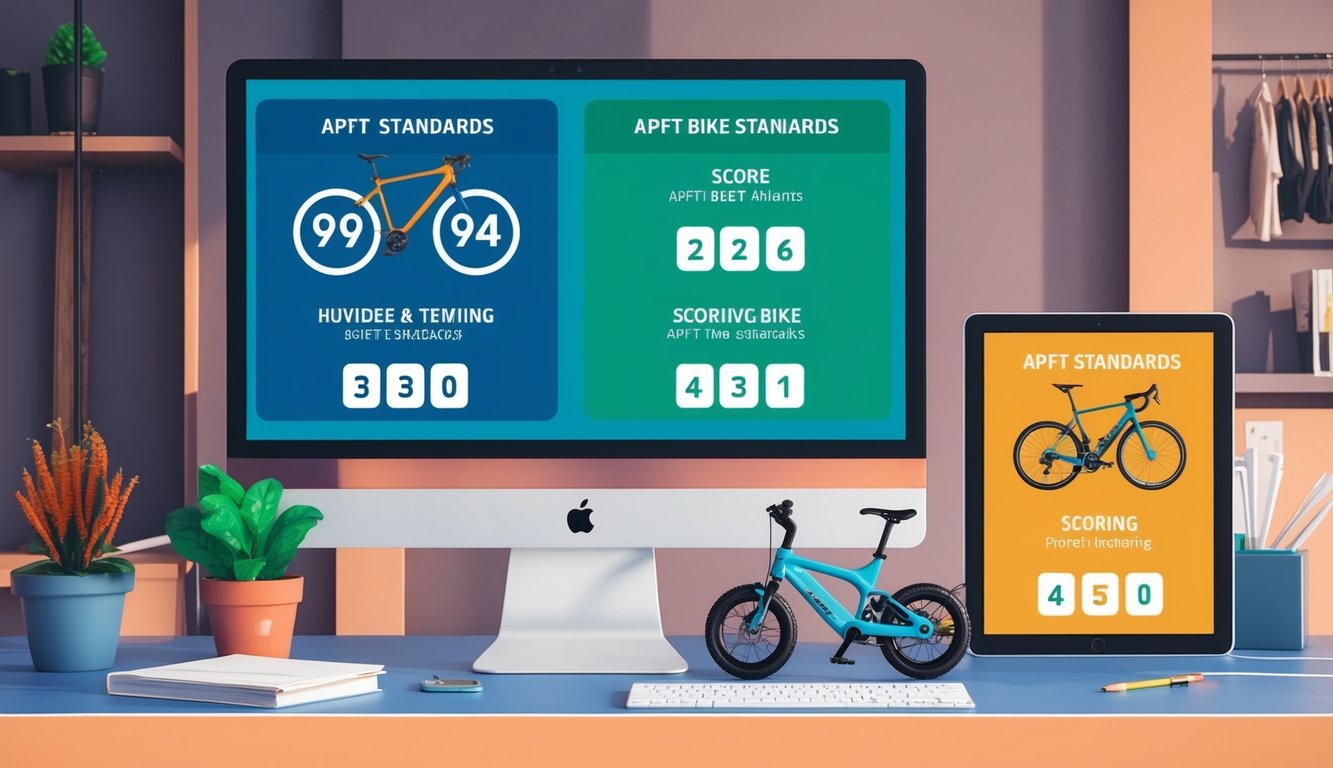
The APFT employs a point-based system to evaluate soldiers’ fitness levels, with your performance in each event generating a score that determines your pass/fail status.
### Scoring Tables
APFT scoring tables categorize performance based on age and gender, with separate tables for push-ups, sit-ups, and the 2-mile run.
Each repetition or completion time provides a specific point value.
For example, for a 25-year-old male, achieving 42 push-ups may earn 60 points, whereas the equivalent number for a 35-year-old female may correspond to a unique point value of 100.
These tables exist to ensure equitable comparisons across demographics and are regularly updated to refine standards.
### Calculating Your Score
To gauge your APFT score, convert your raw performance into points for each event, utilizing the correct scoring table based on your age and gender.
Total your points from all three events for your final score, with a maximum possible score of 300 (100 points per event).
It is critical to acquire at least 60 points in each event to pass; failing to meet this benchmark in any single event results in an overall failure, regardless of the total score achieved.
### Understanding Your Results
Your APFT score is indicative of your overall fitness level, with higher scores reflecting improved performance and readiness.
Scores can often influence your eligibility for promotions and specialized assignments.
Aim for consistent improvements in your performance over time.
If any event is not passed, focus your training efforts on that specific area.
Many units provide remedial fitness programs tailored to assist soldiers in meeting APFT standards.
## Alternate APFT Events
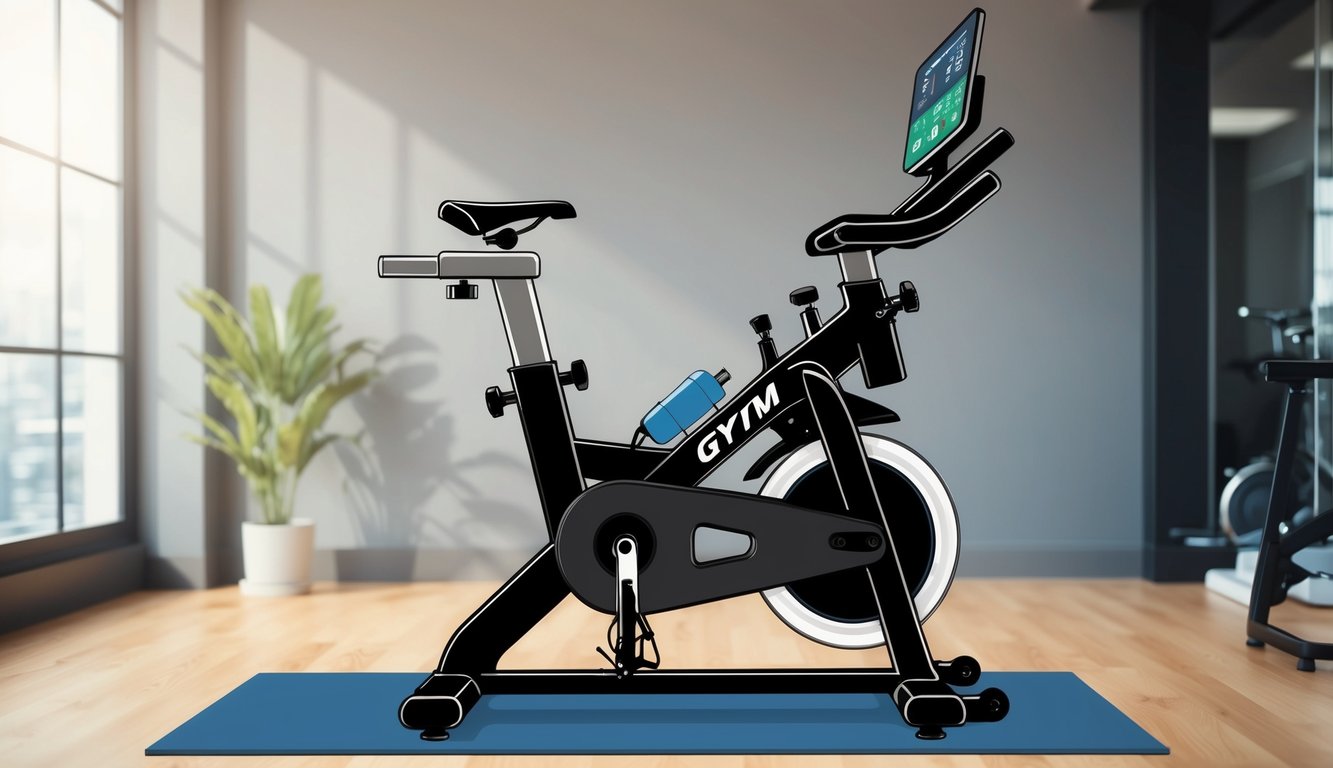
For soldiers unable to complete the standard 2-mile run due to medical reasons, the Army offers alternative options to ensure all service members can demonstrate physical fitness while accommodating health considerations.
### Eligibility for Alternate Events
To be eligible for alternate APFT events, confirmation of a permanent or long-term temporary physical profile from a medical professional is required.
This profile should detail your limitations and suggest specific alternate events.
Approval from your commander will follow a review of your medical documentation.
It’s worth noting that not anyone with a profile is automatically cleared for alternate events—the profile must explicitly state that the standard 2-mile run poses safety concerns.
### 6.2-Mile Bicycle Standards
The bike test is a well-recognized alternative aerobic event characterized by the following details:
– **Distance**: 6.2 miles (10 kilometers)
– **Equipment**: Stationary bike or standard road bicycle
– **Scoring**: Determined by the time taken to complete the distance
– **Passing Standard**: Varied by both age and gender
To adequately prepare, concentrate on enhancing your cycling endurance and speed.
If utilizing a road bike, train on similar terrain, or familiarize yourself with stationary bike settings as needed.
### Alternate Aerobic Events
In addition to the bike test, alternative options include:
1. **800-Yard Swim Test**
– Conducted in a pool
– Any swimming stroke is allowed, but underwater swimming is prohibited
– Scoring is based on time to completion
2. **2.5-Mile Walk**
– Performed on a measured pathway
– Continuous walking pace is essential; running or jogging isn’t permitted
3. **Stationary Bike Test**
– Requires completion of 12,000 meters within 25 minutes
– Resistance levels may be adjusted as needed
Each event is assigned specific scoring tables based on age and gender, and your score from the alternate event is combined with your push-up and sit-up scores to determine your overall APFT performance.
## APFT Test Administration
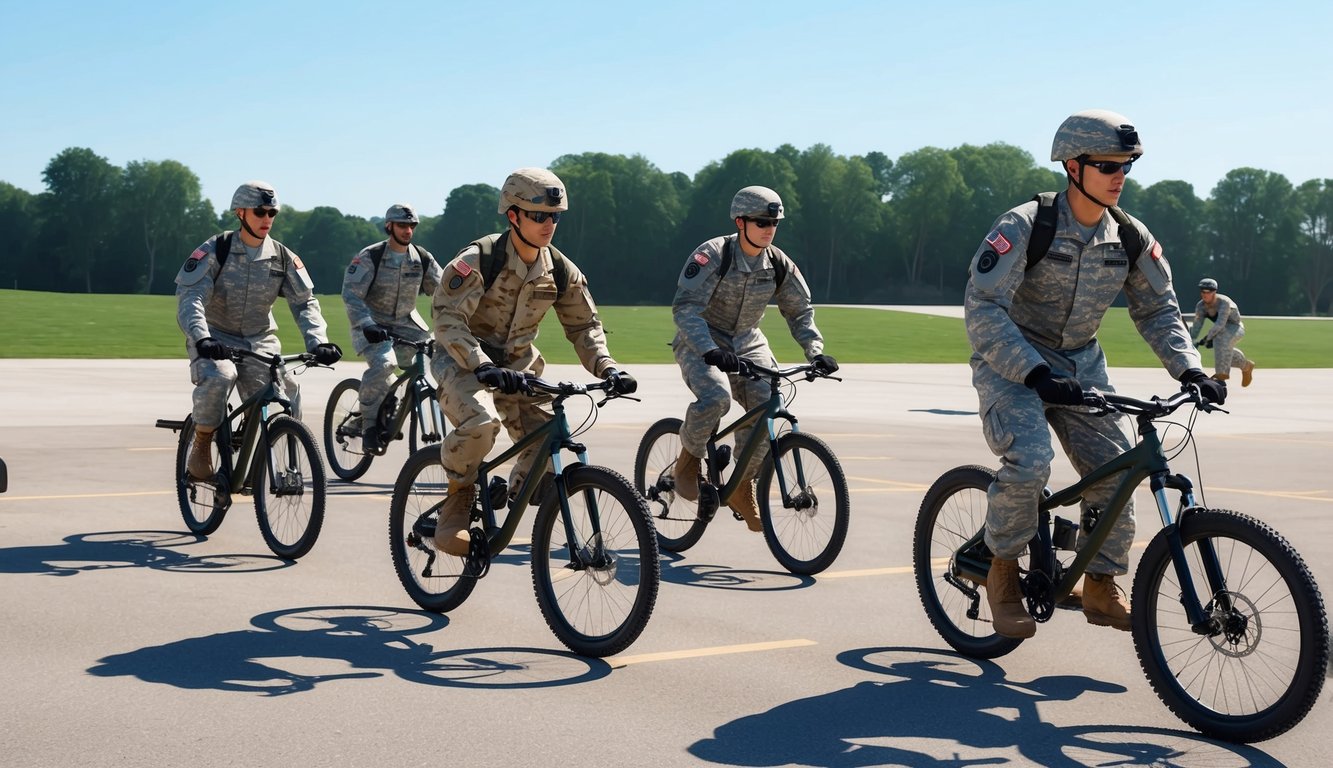
The administration of the APFT bike event necessitates careful preparation and execution.
Appropriate planning, defined roles, and adherence to protocols guarantee an equitable and accurate evaluation of soldier fitness levels.
### Preparation and Equipment
Before test day, collect the necessary equipment, including stationary bicycles, stopwatches, and scoring sheets.
Ensure all bikes are well-maintained and calibrated correctly.
It’s also wise to have extra bikes available in case of malfunctions.
Set the testing area in a suitable location, cleared of distractions and spacious enough to accommodate all participants.
Proper ventilation is critical, particularly if the test is conducted indoors.
Additionally, ensure access to water and first aid supplies is readily available.
Stay updated with the most current APFT guidelines and scoring tables, as these may change routinely.
### Roles and Responsibilities
Administering the APFT bike test involves various key roles:
– The **Event Supervisor** oversees the testing process comprehensively.
– **Scorers** track individual performances, recording scores.
– **Timers** ensure accurate timing for each soldier’s test duration.
– **Bike Monitors** guarantee proper bike setup and can handle equipment issues as they arise.
As an administrator, your role includes briefing all individuals on their responsibilities and making sure everyone comprehends the testing protocol.
Additionally, verification of medical clearance for all participants is necessary.
### Test Day Protocol
On the day of the test, initiate a safety briefing with all participants.
Describe the test procedures, scoring standards, and any relevant regulations, allowing time for questions to assure thorough understanding.
Each soldier’s identity must be confirmed before the test commences, ensuring correct bike adjustments and demonstrating proper form and technique.
During the test, maintain a regulated atmosphere.
Observe soldiers for signs of distress and be equipped to halt the test if needed.
Record scores accurately and expediently.
After the completion of the test, review and validate all scores, providing performance feedback and ensuring proper documentation for records is maintained.
## Training for the APFT
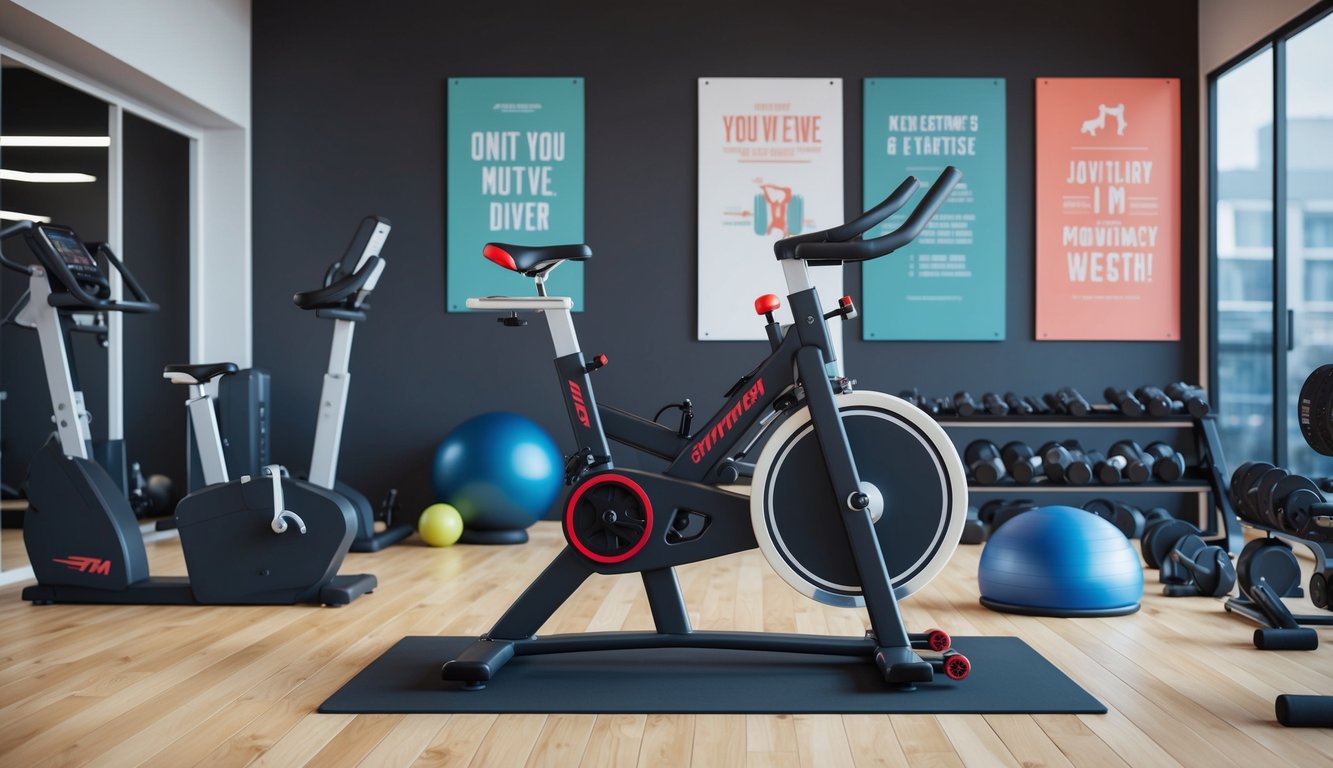
Preparing for the Army Physical Fitness Test necessitates a comprehensive approach that combines cardiovascular fitness, strength, and endurance while ensuring proper nutritional intake and injury prevention.
### Physical Training Programs
Start with an initial fitness assessment to gauge your current performance level, gradually increasing the intensity and volume of your workouts over time.
Incorporate a mix of cardio exercises such as running, cycling, and swimming along with strength training using bodyweight exercises, free weights, and resistance bands.
Aim to engage in 3-4 cardio sessions and 2-3 strength workouts weekly.
Vary routines to keep motivation high and target diverse muscle groups, including interval training to foster endurance and speed.
Consider joining a unit fitness program or seeking guidance from a trainer knowledgeable about APFT standards.
They can tailor workout strategies to meet your precise needs and objectives.
### Nutrition and Fitness
Proper nutrition plays a key role in supporting your training efforts.
Focus on a balanced diet rich in lean proteins, complex carbohydrates, and healthy fats, while remaining hydrated by drinking water throughout the day.
Time your meals effectively around workouts—snacking lightly before exercise and replenishing with proteins and carbohydrates afterward.
Consult with a healthcare provider before considering supplements like protein powders or multivitamins.
Adequate rest is essential—aim for 7-9 hours of sleep nightly, as recovery is vital for fitness improvement.
Minimize alcohol intake and avoid smoking to optimize your body’s performance.
### Injury Prevention and Recovery
Always warm up prior to workouts with dynamic stretches and light cardio, cooling down afterward with static stretches.
Integrate flexibility work into your routine to enhance range of motion.
Pay attention to your body, adjusting the training intensity to accommodate how you feel.
Avoid pushing through any pain—address potential issues early on to prevent significant injuries.
Maintain form in exercises to minimize the risk of strains or overuse injuries.
Plan for sufficient rest between workouts, employing recovery methods such as foam rolling, massage, or ice baths.
Should an injury occur, adhere to a rehabilitation schedule and gradually return to full training capacity.
## APFT Policies and Regulations

The Army Physical Fitness Test (APFT) is subject to strict policies and regulations to ensure consistency and equity.
These guidelines encompass everything from the administration of tests to provisions for soldiers with medical profiles.
### Army Regulation Compliance
Comprehensive APFT procedures can be found in Army Regulation 600-9.
This regulation details how each event should be executed, including push-ups, sit-ups, and the two-mile run.
Adhering strictly to these guidelines is critical.
Scoring tables are periodically reviewed and updated, so it’s crucial to utilize the current version applicable to your age and gender.
Ensure that your unit carries out the APFT at least twice a year; while company commanders generally schedule these tests, battalion commanders can direct additional evaluations as needed.
### Profile Management
If you have a medical condition that impacts your ability to complete the standard APFT, you may be issued a temporary or permanent profile.
Temporary profiles typically last fewer than 90 days and may excuse you from specific APFT events.
Permanent profiles require detailed documentation.
Close collaboration with your healthcare provider and unit leadership is required to identify appropriate alternate events.
It’s important to note that having a medical profile does not exempt you from all aspects of the APFT; you are still expected to take part in the events for which you are medically cleared.
### Fairness and Equality
The APFT is designed to evaluate all soldiers equitably, irrespective of job or unit.
This standardization fosters fairness across the Army.
Test administrators must be adequately trained to uphold consistency, delivering clear instructions and accurately counting repetitions for all participants.
If you feel that your test was not administered fairly, you have the right to request a retest, but this must be done immediately following the APFT.
The Army continuously reviews APFT policies, addressing matters concerning gender and age standards to ensure a balance between fairness and combat readiness.
## The Transition to the ACFT

The Army’s shift from the APFT to the ACFT introduced significant modifications in how soldiers’ physical fitness is assessed, aiming to better correspond with both combat readiness and role-specific demands.
### Differences between APFT and ACFT
While the APFT entailed push-ups, sit-ups, and a 2-mile run, the ACFT now includes six events: deadlift, standing power throw, hand-release push-ups, sprint-drag-carry, leg tuck or plank, and a 2-mile run.
The ACFT provides a more comprehensive evaluation of physical capabilities, including strength, power, and endurance, to make it more relevant to combat requirements and Military Occupational Specialty (MOS).
Notably, the ACFT initially sought to implement gender-neutral and age-neutral scoring, though this approach has been adjusted to account for physiological differences.
### Preparing Units for the Changeover
To facilitate the transition to the ACFT, the Army utilizes a phased rollout strategy, allowing time for soldiers to adapt to new equipment and exercise techniques.
Many units were provided with new fitness gear like hex bars, medicine balls, and sleds.
Training sessions to instruct proper form for new exercises such as the deadlift and power throw were likely part of your preparation.
The Army National Guard and Army Reserve faced distinct challenges during this transition.
With limited access to equipment, innovative solutions and extra support from active-duty soldiers were often necessary.
Regular practice sessions were likely organized within your unit to aid in improving fitness levels and test performances.
Keep in mind that the ACFT’s goal is to enhance overall soldier readiness and effectiveness in combat situations.
## Special Considerations and Adaptations

The APFT bike standards consider multiple variables that influence performance and fitness levels, such as individual physiological variations, medical concerns, and specific military job requirements.
### Physiological Differences
Factors like body composition, age, and sex significantly impact bike performance.
Men typically possess higher muscle mass and aerobic capabilities, which can lead to faster completion times.
Additionally, aging can affect maximum heart rate and overall endurance.
To ensure fairness across different physiological profiles, the Army modifies passing standards accordingly:
| Age Group | Male (12km) | Female (12km) |
|————-|————–|—————-|
| 17-21 | 26:25 | 28:42 |
| 22-26 | 27:00 | 29:24 |
| 27-31 | 27:39 | 30:09 |
These standards aim to maintain equitable assessments while upholding fitness expectations.
### DA Form 3349 and Permanent Profiles
If you face medical limitations that prevent you from participating in the standard APFT, you might obtain a DA Form 3349 (Physical Profile).
This form outlines any physical restrictions and can authorize alternative events, including the bike test.
Permanent profiles are designated for long-term cases.
If you are on a permanent bike event profile, maintaining consistent adherence to adjusted standards is necessary.
Your command team and healthcare professionals will collaborate to ensure your fitness requirements align with your health conditions.
### Adaptations for Specific Roles
Your Military Occupational Specialty (MOS) may shape how these bike standards apply to you.
Soldiers in combat arms roles, such as infantry or armor, generally face higher physical benchmarks, whereas support roles may possess different expectations.
For example, Rangers are expected to uphold exceptional fitness levels; those in or seeking the Ranger Regiment will likely encounter more stringent performance requirements across all fitness assessments, including the bike test.
In some units, bike training may be incorporated into regular physical training routines to boost readiness.
This could involve interval workouts, long-distance riding, and sprint work to elevate both speed and endurance for the biking test.
## References and Resources

To deepen your knowledge about APFT bike standards, consider these valuable resources:
**Army Field Manual 7-22**: This manual offers comprehensive guidance on all aspects surrounding Army physical fitness, including alternative aerobic events like the bike test.
**DA Form 705**: The official scorecard for the Army Physical Fitness Test.
Familiarity with this form will be necessary for recording your biking results.
**Army Regulation 350-1**: Outlines the overarching policy regarding Army training and education, encompassing fitness standards.
Online calculators can assist in determining your required biking pace based on both age and gender.
The official Army website also serves as a useful resource for relevant test protocols and scoring guidelines.
Don’t hesitate to reach out to your local Army education centers, which may provide study materials and practice assessments.
Consulting with your unit fitness leaders can also yield guidance and training strategies.
Keeping up with the latest Army fitness policies is essential, as regulations are subject to change.
Always verify you’re working with the most current information while preparing for your fitness examination.
## Frequently Asked Questions
The APFT bike standards entail several important details regarding resistance levels, timing, and scoring.
Here are some common inquiries soldiers have about this alternate aerobic event.
### How much resistance should be set on the bike for the APFT?
The bike’s resistance should be adjusted to a level that allows you to maintain a consistent cadence throughout the test.
Aim for a setting that feels both challenging and manageable for the event duration.
### Are the bike standards the same for ACFT as for APFT?
No, the bike standards differ between the APFT and ACFT.
The ACFT employs a different scoring system and time requirements for the biking event compared to the APFT.
### What are the time requirements for the biking event in the ACFT?
The ACFT bike event lasts for 12 minutes, and your score is based on calories burned during this duration, adjusted for your body weight.
### How do I find the official APFT biking standards?
You can find the official APFT biking standards in Army Field Manual 7-22, Appendix A, which details specific requirements and scoring tables for the bike test.
### What are the differences between the bike and walk standards in the ACFT?
The bike and walk events within the ACFT feature different time requirements and scoring methodologies.
The bike test has a duration of 12 minutes, while the walk covers a distance of 2.5 miles.
### Where can I download the APFT bike standards in PDF format?
You can download the APFT bike standards as a PDF from the Army’s official publications website or through your unit’s physical training coordinator.

